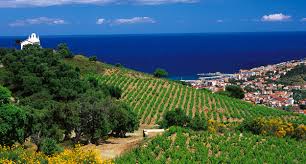The Beauty and Bounty of Vineyards
Vineyards are more than just fields of grapevines; they are living, breathing works of art that produce some of the most exquisite wines known to humanity. Nestled in picturesque landscapes, vineyards are a testament to the harmonious relationship between nature and human craftsmanship.
Walking through a vineyard is a sensory experience like no other. The lush green vines stretching as far as the eye can see, the sweet scent of ripening grapes hanging in the air, and the gentle rustle of leaves in the breeze create a tranquil atmosphere that soothes the soul.
But vineyards are not just about beauty; they are also about bounty. Each grapevine is carefully tended by skilled hands throughout the year, ensuring that it receives just the right amount of sunlight, water, and nutrients to thrive. When harvest time arrives, vineyard workers meticulously hand-pick each grape cluster, selecting only the finest fruit for winemaking.
Winemaking is an ancient art that transforms these humble grapes into complex and flavorful wines. From crushing and fermenting to aging and bottling, every step in the winemaking process requires precision and expertise. The result is a bottle of wine that captures the essence of the vineyard where it was born.
Visiting a vineyard offers a glimpse into this fascinating world of winemaking. Many vineyards welcome visitors for tours and tastings, allowing wine enthusiasts to learn about the different grape varieties, terroir influences, and winemaking techniques that make each wine unique.
Whether you’re a seasoned oenophile or someone simply looking to appreciate nature’s beauty, a visit to a vineyard is sure to leave you with a deeper appreciation for wine and the labor of love that goes into creating it. So next time you raise your glass in celebration, remember the vineyards that made it all possible.
Six Essential Tips for Successful Vineyard Management: Cultivating Quality Grapes for Premium Wines
- Select the right grape varieties for your vineyard based on climate and soil conditions.
- Ensure proper irrigation to support healthy grape growth and development.
- Prune vines regularly to promote airflow and prevent disease.
- Monitor vine health closely to catch any issues early on.
- Harvest grapes at the optimal ripeness to produce high-quality wines.
- Maintain records of vineyard activities and observations for future reference.
Select the right grape varieties for your vineyard based on climate and soil conditions.
Selecting the right grape varieties for your vineyard is crucial to producing high-quality wines. By carefully considering the climate and soil conditions of your vineyard, you can ensure that the grapes thrive and express their full potential. Different grape varieties have specific requirements when it comes to sunlight, temperature, water, and soil composition. By matching the grape varieties to the unique characteristics of your vineyard, you set the stage for success in winemaking. This thoughtful selection process not only enhances the quality of your wines but also reflects a deep understanding and respect for the land on which your vineyard stands.
Ensure proper irrigation to support healthy grape growth and development.
Proper irrigation is essential to support healthy grape growth and development in vineyards. Grapes require a consistent water supply to thrive, especially during critical growth stages such as flowering and fruit set. By ensuring that grapevines receive the right amount of water at the right time, vineyard owners can promote optimal vine health, fruit quality, and ultimately, the production of high-quality wines. Effective irrigation practices not only help prevent stress on the vines but also contribute to sustainable vineyard management, ensuring a bountiful harvest year after year.
Prune vines regularly to promote airflow and prevent disease.
Pruning vines regularly is a crucial practice in vineyard management to promote airflow and prevent disease. By carefully trimming back excess growth, vineyard workers create space between the vines, allowing air to circulate more freely. This increased airflow helps reduce humidity around the grape clusters, lowering the risk of fungal diseases such as mildew and botrytis. Additionally, pruning encourages the vines to focus their energy on producing high-quality fruit, leading to better grape ripening and ultimately, superior wine quality.
Monitor vine health closely to catch any issues early on.
Monitoring vine health closely is crucial in the management of vineyards to catch any issues early on. By keeping a watchful eye on the vines, vineyard owners and workers can quickly identify signs of disease, nutrient deficiencies, or pest infestations. Early detection allows for prompt intervention, such as targeted treatments or adjustments in cultivation practices, to prevent the spread of problems and maintain the overall health and productivity of the vineyard. Regular monitoring not only helps safeguard the vines but also ensures a thriving environment for producing high-quality grapes and wines.
Harvest grapes at the optimal ripeness to produce high-quality wines.
Harvesting grapes at the optimal ripeness is a crucial step in producing high-quality wines. The timing of the harvest greatly influences the flavors, aromas, and overall quality of the final product. Grapes that are picked too early may lack complexity and depth, while those left on the vine for too long can result in overly ripe or even spoiled fruit. By carefully monitoring the ripeness of the grapes and selecting the perfect moment to harvest, winemakers can ensure that their wines exhibit the ideal balance of sweetness, acidity, and flavor intensity, ultimately creating wines that are truly exceptional in every sip.
Maintain records of vineyard activities and observations for future reference.
Maintaining detailed records of vineyard activities and observations is essential for ensuring the success and longevity of a vineyard. By documenting tasks such as pruning, fertilizing, pest control, and harvest dates, vineyard owners can track trends, identify potential issues, and make informed decisions for the future. These records serve as a valuable resource for understanding the vineyard’s history, optimizing practices, and preserving knowledge that can be passed down through generations. Consistent record-keeping not only enhances efficiency but also contributes to the overall health and productivity of the vineyard in the long run.

